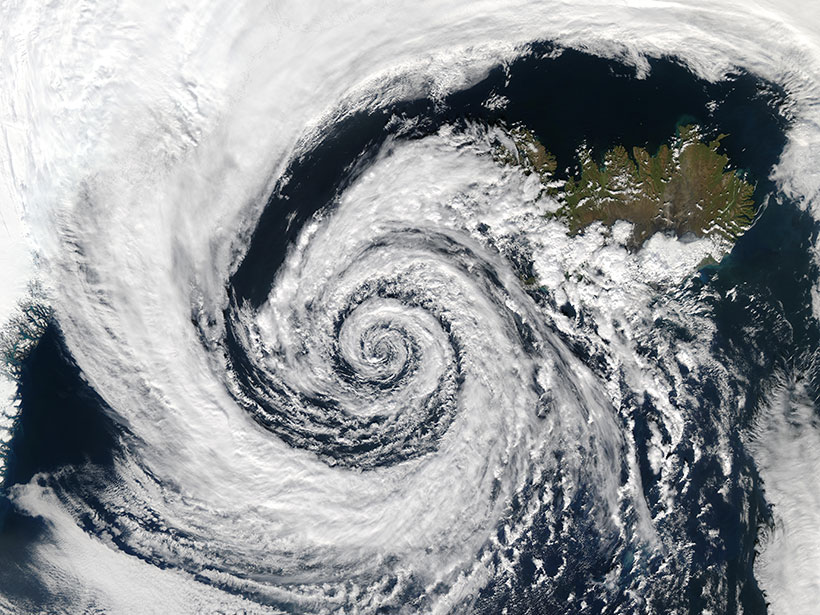Source: Geophysical Research Letters
It is well established that planet Earth is heating up, but how a warmer climate will affect weather events and human life often remains unclear. Cyclones are particularly difficult to assess in this respect: Numerous competing factors drive the storms, such as air pressure, atmospheric temperature gradients, and moisture—all of which may be influenced by the warming climate.
Recently, Li et al. analyzed historic weather data and sea surface temperatures from the 1940s through 2011 to contrast how cyclones that occur outside of the tropics in the northern Atlantic Ocean behaved in warmer versus cooler periods. Specifically, they used the periods 1948–1963 and 1997–2011 as analogues for the warmer future and 1979–1993 as a cooler baseline period. The researchers concede that the historic conditions do not match perfectly with predictions for the future; nevertheless, their analysis revealed that cyclones during warmer periods generated significantly more precipitation but did not exhibit increased intensity otherwise.
Because a warmer climate can lead to more evaporation and thus greater humidity, previous research has sought to understand how the added moisture would affect cyclones. The increased levels of precipitation detailed here support the theory that added moisture increases the efficiency of poleward heat transport by the storm track, as opposed to increasing wind speed or vorticity through latent heat release. The researchers suggest that this finding affirms the current cyclone models, which have arrived at similar conclusions. (Geophysical Research Letters, doi:10.1002/2014GL062186, 2014)
—David Shultz, Freelance Writer
Citation: Shultz, D. (2015), Historic warm periods shed light on future cyclones, Eos, 96, doi:10.1029/2015EO030195. Published on 1 June 2015.
Text © 2015. The authors. CC BY-NC 3.0
Except where otherwise noted, images are subject to copyright. Any reuse without express permission from the copyright owner is prohibited.

